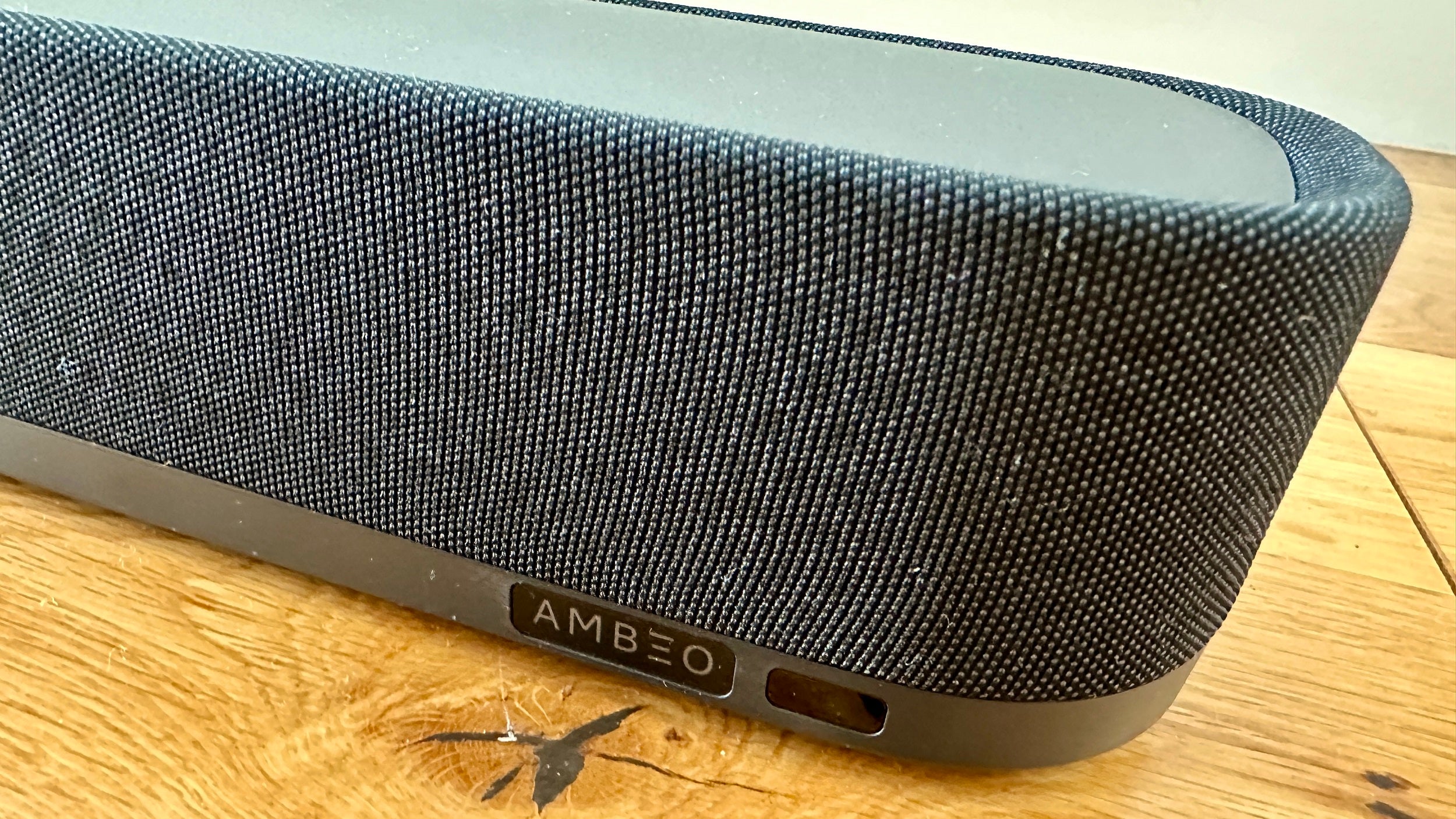Fairphone 5 Review
Our final thoughts on the sustainable, easily repairable smartphone.






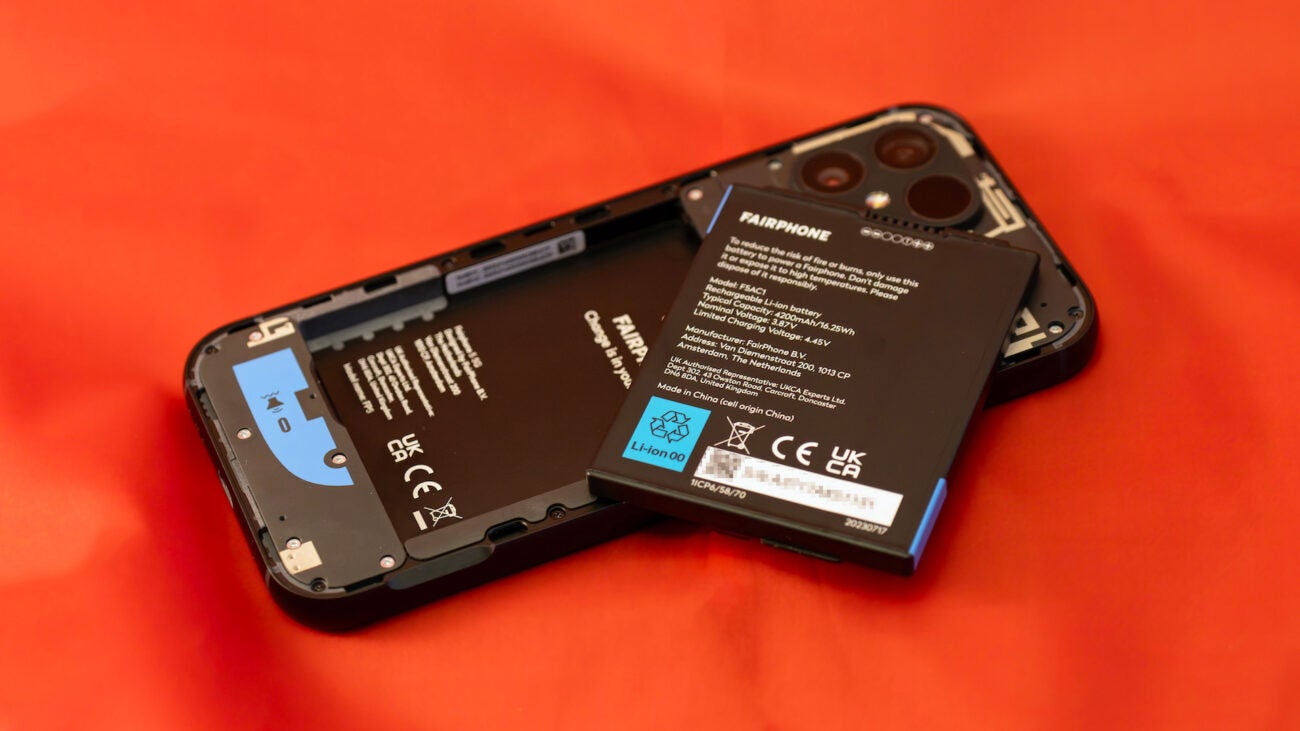
Verdict
Fairphone’s latest smartphone is a big jump over the Fairphone 4, and has an approach to the materials it’s made from, its repairability and its software support that’s refreshing for an industry that often treats these high-tech pocket marvels as disposable items. However, there’s a huge question over whether it does enough to attract buyers to a phone that doesn’t otherwise stand out from other, often cheaper, mid-range offerings.
Pros
- Long update life
- Recycled materials
- Easily repairable
Cons
- Expensive for what you get
- Thicker than other phones
- Average camera performance
Key Features
- Software updates until 20318 years of security patches and a 5-year warranty make the Fairphone 5 a long-term prospect.
- RepairabilityThe Fairphone 5 boasts an easily replaceable display, cameras, battery and more
- 6.46-inch 120Hz displayModern 6.46-inch Full HD+ display with a smooth 120Hz refresh rate.
Introduction
Longer-lasting devices are a bit of a thing right now, with Google’s announcement that the Pixel 8 phones will receive seven years of updates.
Dutch manufacturer Fairphone can go one better than that, however, and possibly three better. Its latest product, the Fairphone 5, comes with a promise of eight years’ worth of security patches, and ten if they can manage it.
You only get five years of full Android version updates with the Fairphone, sadly, but this trend toward longevity is important if we want to save both e-waste and money. In ten years’ time, however, the Fairphone 5, which is firmly in the mid-range now, probably won’t look so attractive.
Design
- Thinner than previous Fairphones
- Easy to take apart
- Fairly light
The Fairphone is all about repairability and sustainability. This means it’s designed to be opened up without a stack of specialist tools and an incantation to an outer-dimensional entity, which in turn means it’s a bit thicker than we’ve come to expect from a modern smartphone.
It’s noticeable if you hold it next to a Pixel 8 or iPhone 15, but in use, it’s not going to matter. It might even improve things, as there’s a bit more to hold on to.
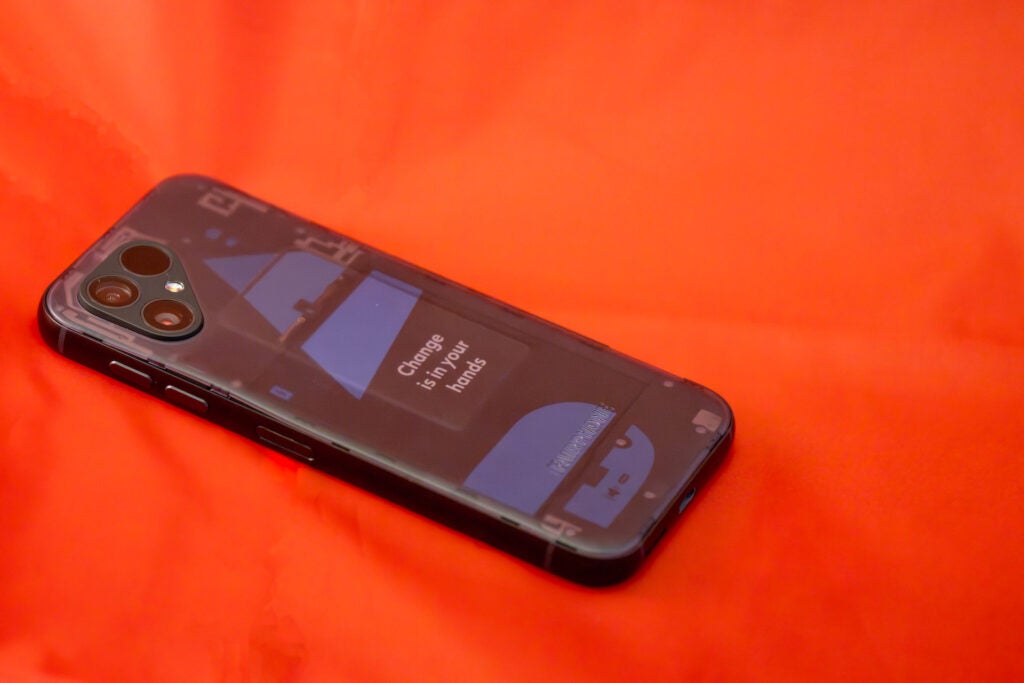
As such, it’s a uniform black slab of plastic from the back and sides. Fairphone claims more than 70% of the materials used in the phone are recycled (from plastics all the way down to the tin used in the solder) or ‘fair focus’, which means using Fairtrade gold, the purchase of cobalt and silver credits that benefit miners, and with the lithium in the battery assessed by the Initiative For Responsible Mining Assurance to help ensure it’s mined responsibly.
On the rear of my review model, there’s a translucent plastic back that’s made to be removed, and which offers a tantalising glimpse of the battery and various modules inside, a bit like the Nothing Phones but without the fancy lighting. “Change is in your hands” is emblazoned on the battery and visible through the cover, a sentiment that might hit differently once the OS updates eventually dry up.
Getting the back off is easy – no special tools, just a niche to dig your thumbnail into and pull. Once that’s gone – it’s a sheet of thin plastic rather than any fancy glass or ceramic – you’re presented with a lot of small but standard cross-head screws rather than Torx or anything more exotic (and a pack of them is available from Fairphone in case you lose one in the middle of a repair).
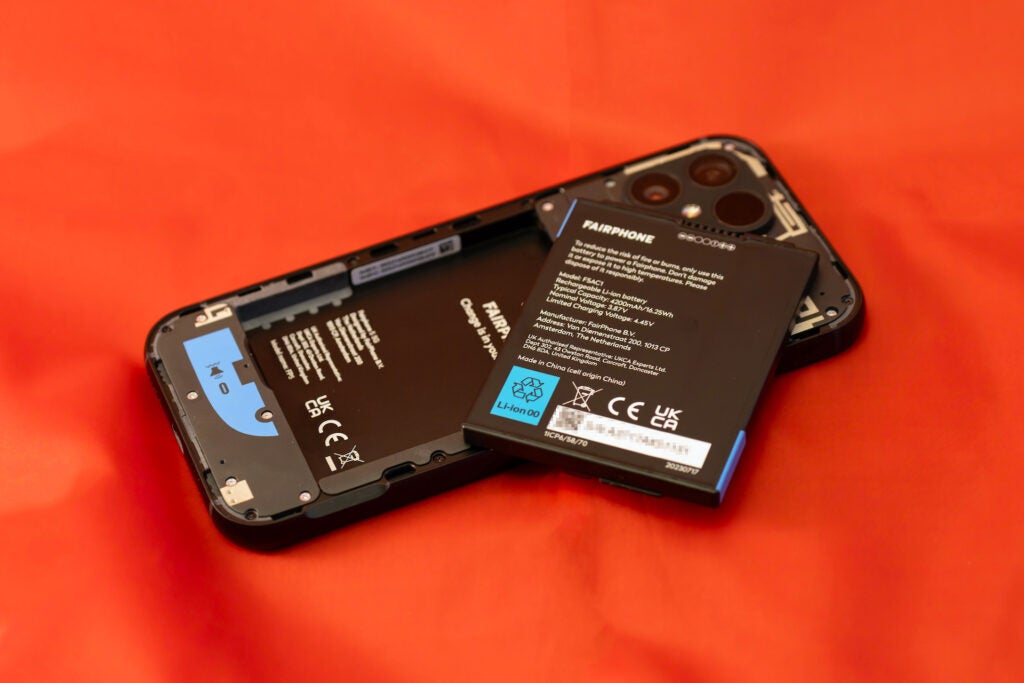
The battery responds to a fingernail too, the most easily replaceable part of the phone slipping out easily, exposing the microSD card and SIM card slots as it does so.
Elsewhere, there’s a compact triangular camera cluster that rises surprisingly far above the back of the phone, and there’s a much wider arc to the corners than on many other devices, giving it a distinctive look. It’s not that heavy, despite being a bit chunky, and with a fingerprint reader built into the power button and face recognition unlocking on-board, it’s a good example of a modern Android phone.
Display
- OLED
- 90Hz refresh rate
- 800nits brightness
There’s no argument that OLED screens are a big hit on smartphones. Their brightness and colour saturation means you can use your phone when you’re outside without needing to turn away from the Sun or scoot under a tree.
The Fairphone 5’s screen offers a resolution greater than 1080p and a middle-of-the-road 90Hz refresh rate. It’s enough to keep things smooth, but once again, it has been beaten elsewhere by phones offering 120Hz.
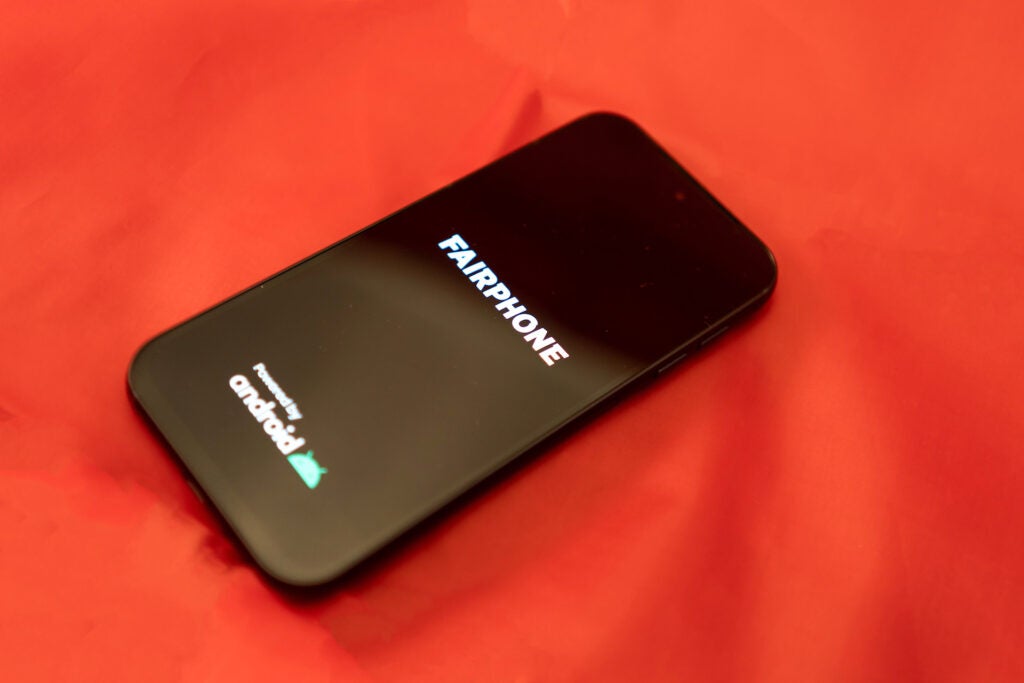
There’s a Gorilla Glass 5 covering over the front, and some neat options in the phone software including a blue light filter and a reading mode, but the big news is that the screen can be replaced, along with much of the rest of the phone, using only a few tools.
Spare parts, which also include the cameras, USB port and speaker, are available from the Fairphone website, though at the time of writing were all marked as ‘coming soon’.
Cameras
- Dual 50MP sensors
- 4K@30fps video
- No telephoto lens
With dual 50MP sensors that produce 12.5MP files by default, and optical image stabilisation, there’s a lot to like about the Fairphone’s cameras.
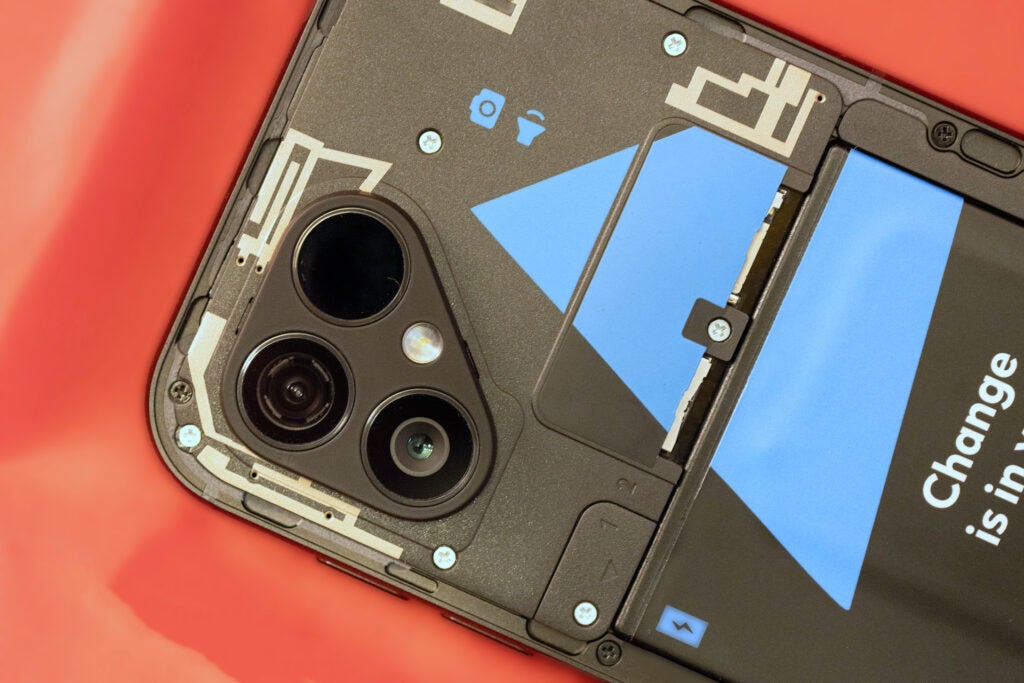
You get a wide-angle main camera, an ultrawide, and a depth sensor, but no true telephoto option beyond digital zoom. This is fine if you select the 2x option, but going all the way to the maximum offered 20x gives you a fuzzy junk shot that’s hard to keep still. Just as you’d expect.
The images the main camera’s Sony IMX800 sensor produces are sharp enough, though slightly lacking in colour saturation, especially in the reds.
The ultrawide camera isn’t as sharp, and is more affected by lens flare if you’ve got the Sun in the frame.
The front-facing camera is notable for its high pixel count but, again looks washed out. Video suffers from the same problems, and tops out at 4K@30fps, but benefits from the image stabilisation.
In low light, it’s surprisingly good, with the Android Night Sight software allowing longer exposures while handheld, though the colours wash out completely once it gets too dim. The cameras, as a whole, are fine. OK. Good enough. Nothing special.
Performance
- Octa-core chipset
- Long service life
- Firmly mid-range
In order to get such a long service life for the Fairphone 5, the manufacturer has used a chipset that’s aimed at industrial IoT applications (the Qualcomm QCM6490) rather than pocket supercomputers.
It doesn’t make a lot of difference – it’s an eight-core chip like many phones have, with a single high-performance core, three slightly slower cores, and four low-power cores to run things when the phone’s on standby. There’s 8GB of RAM, and 256GB of storage that can be augmented with a 2TB microSD card.
That chipset, however, is immediately going to be overshadowed. The hot core can reach 2.7GHz, and there are 3GHz mid-range phones already on the market such as the Sony Xperia 5 IV, and the flagship iPhone 15 Pro hits 3.78GHz.
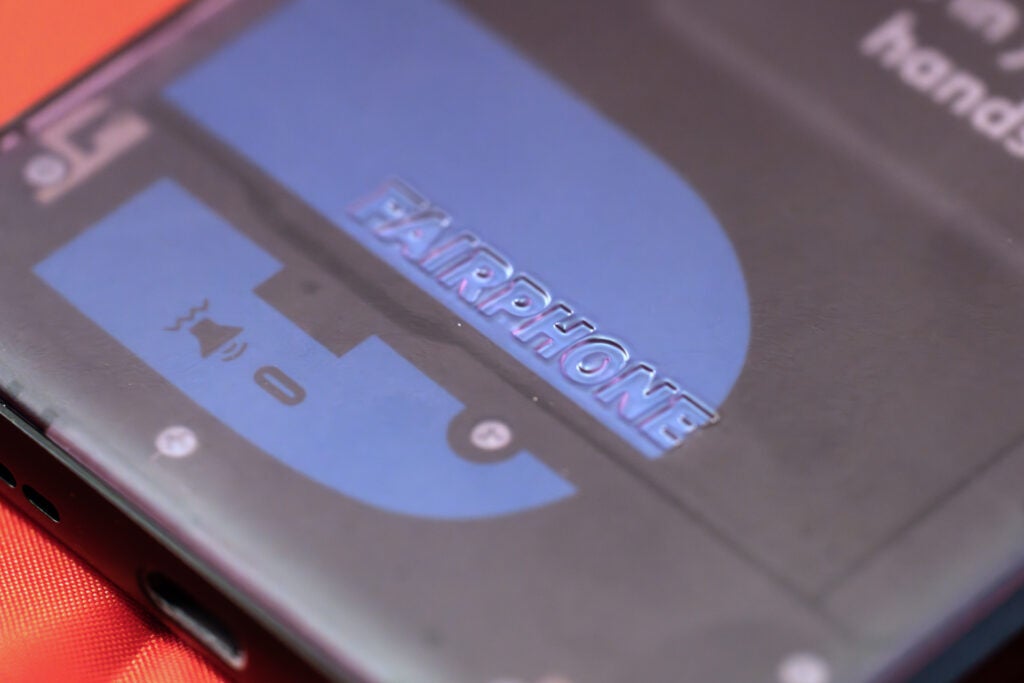
It’s enough to make you worry about the longevity of a phone that’s supposed to last several years, as you’re more likely to upgrade if you see alternative handsets pulling away in terms of performance. Consider, though, that phones are tools of communication, of voice calls, text messages and social media, rather than of aeroplane design and 3D rendering, and it starts to make a bit more sense.
There’s ample power here for the apps I use every day, and will continue to be into the near future. The Fairphone 5’s Geekbench scores put it about level with the Motorola Razr 40, so it’s not in bad company, but this may become a weakness as the phone ages.
Software
- Five years of OS updates
- No bloatware
- Desktop mode
Android 14 dropped while I was testing the phone, but the Fairphone 5 resolutely stayed on Android 13. It’s a clean implementation of the OS that’s nicely free of bloatware and unnecessary apps: even LinkedIn and the Booking.com app, which are usually the first to be uninstalled from a new phone, are notable by their absence.
The big news is the update life, which sees the Fairphone 5 getting five Android version updates (which means Android 18 will be its last in 2027) and eight years of security updates (2031), which might stretch to 10 (2033). This is a ridiculously long life for a smartphone, as many get just two years of OS updates, though the shine was taken slightly off by Google’s announcement that the Pixel 8 series will receive seven years of support.
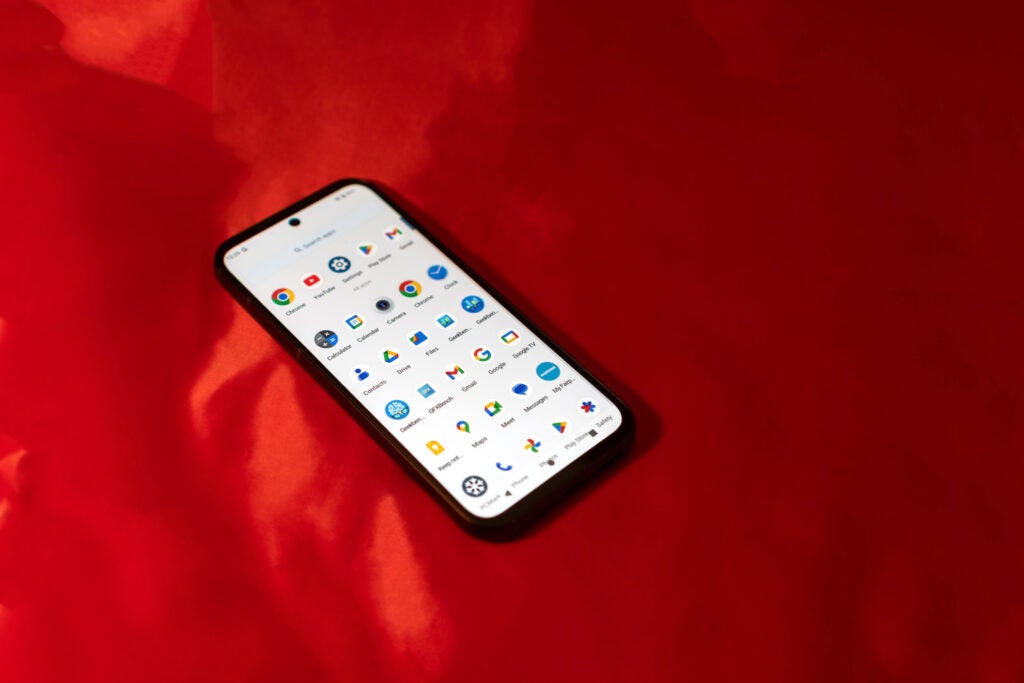
Desktop Mode, which allows you to hook the phone up to an external display in the vein of Samsung’s DEX mode, is another feature that’s great to see. Activate it in the Settings app, and it works instantly when you connect an HDMI cable.
It’s barebones and there are some drawbacks, including not being able to snap apps (which open in a tiny window and have to be resized manually unless you want them fullscreen) to the sides of the screen or minimise them to the taskbar.
However, if you want to use Google Docs and a web browser window at the same time, with an HDMI, mouse and keyboard attached to your phone through a USB-C adapter, it does the job and makes a usable PC in an emergency, with the ability to stream YouTube fullscreen too – though it takes its toll on the battery.
Battery life
- 11 hours of use on average
- Replaceable battery
- USB-C charging only
The 4,200mAh unit managed 11 hours of constant use with the screen on and at 50% brightness in tests, which easily translates to a full day’s use. It’s a smaller cell than the 5,000mAh packs becoming common, but the trade-off is that it’s replaceable.
Being able to replace the battery in a phone is a really powerful thing that’s been lost in the pursuit of thinness, as it not only means the phone can be refreshed when its existing cell has too many charging cycles on the clock, but means you can carry a spare for an instant juice-up instead of relying on a USB charging pack.
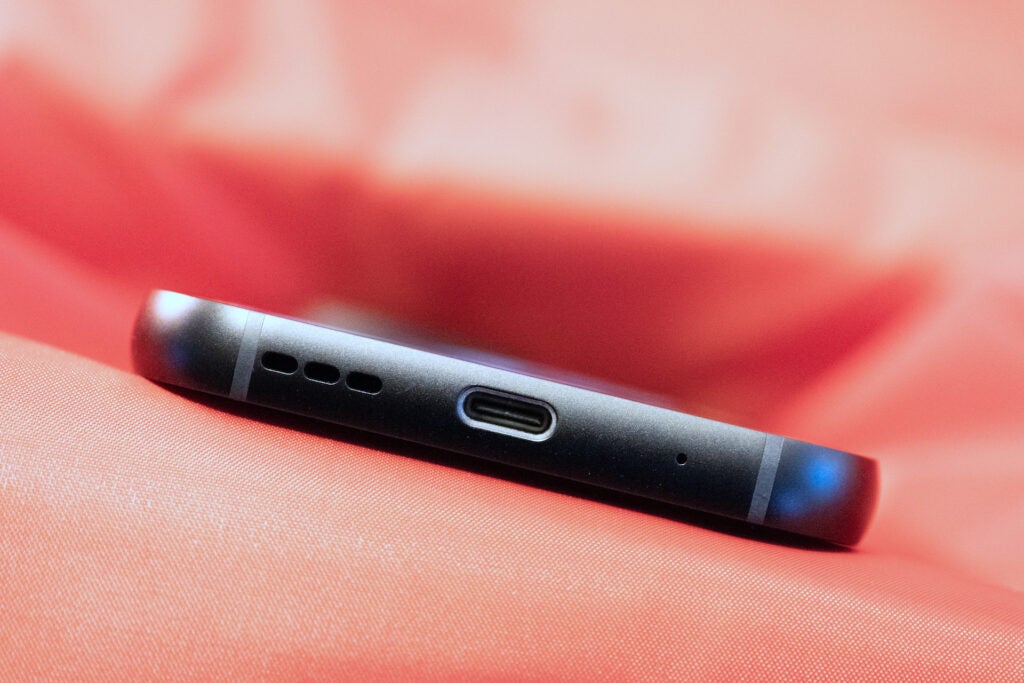
There’s no charger in the box, and the phone can draw current at 30W, which is better than nothing but far from the best fast-charging solution. There’s no wireless charging either, which is a shame, but understandable as the extra connections close to the surface of the phone might have interfered with its repairability.
Latest deals
Should you buy it?
You want an easily repairable phone
If repairability and longevity appeal to you, there’s no reason not to get the Fairphone 5. Even if it doesn’t last the full ten years, it might save you some money in the long run.
You want the best performance
The Fairphone 5 isn’t a bad performer, but it’s not the best either.
Final Thoughts
The Fairphone 5 is a mid-range phone for 2023 that stands out from the competition for two reasons. It’s not only repairable, but could last you until 2033 thanks to a very generous update life that, for almost a month, between the Fairphone’s launch in September and that of the Pixel 8 in October, was the longest on offer.
It’s still a very attractive proposition, however, as Google’s new phone is slightly more expensive and doesn’t offer such easy repairability.
The biggest problem with the Fairphone 5 is what it can’t do. It may have a replaceable battery and a long update life, but for 2023, it’s firmly in the mid-range and there are cheaper alternatives. In a few years, it will be even less attractive to new purchasers, especially if a Pixel 8a inevitably appears.
By the end of its life, it will have been completely overtaken by rivals with increased performance and better cameras, so it will be banking on purchasers seeing its enlightened approach to materials, repair and software updates as enough of a selling point to choose it over something cheaper but less morally sophisticated.
While I’d like to think that consumers will be attracted to a phone that tries to do the right thing, I fear they will pick cheaper but disposable phones instead.
How we test
We test every mobile phone we review thoroughly. We use industry-standard tests to compare features properly and we use the phone as our main device over the review period. We’ll always tell you what we find and we never, ever, accept money to review a product.
Find out more about how we test in our ethics policy.
Used as a main phone for a week
Thorough camera testing in a variety of conditions
Tested and benchmarked using respected industry tests and real-world data





